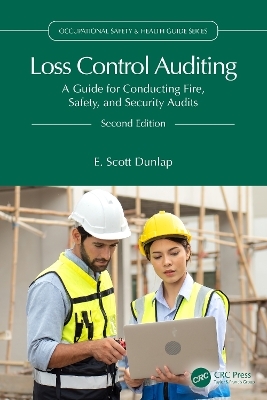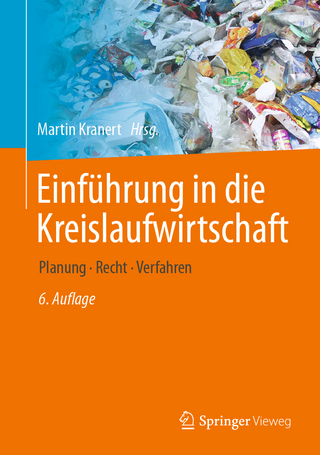
Loss Control Auditing
CRC Press (Verlag)
978-1-032-43685-2 (ISBN)
This new edition benefits from the addition of auditing and system measurement material as promulgated in ISO 45001 and ANSI/ASSP Z10 standards and the Occupational Safety and Health Administration’s Recommended Practices for Safety and Health Programs. It offers an expanded discussion of the application of auditing to the field of emergency management and new text explaining how leading and lagging measures can be used in the auditing process during assessment as well as in the post-audit evaluation. Subsidiary organizations and their integration into the auditing process, such as the areas of contractor management and temporary worker safety are covered in detail. The book discusses the integration of qualitative and quantitative measures in an effort to arrive at a more holistic scoring mechanism to assess organizational performance. In all, the depth of material presented in this thorough book showcases how to develop and execute a loss control management system audit program to a high quality.
An ideal read for industry professionals, students, and postgraduates in the fields of fire service, loss prevention, and safety management.
Prof. E. Scott ‘Scotty’ Dunlap is a Professor in the School of Safety, Security, and Emergency Management at Eastern Kentucky University, USA. He had a 15-year career in practice prior to entering academia, including safety roles in residential mental health, warehousing and distribution, and agriculture settings. His current research focus on industry leader development and involvement in workplace safety and health and safety management system assessment.
Part I – Evolution and Benefits of Auditing. 1. Organizational Levels and Auditing. 2. Inspections. 3. Compliance Audits. 4. Management System Audits. Part II - Defining a Management System. 5. Management System Standards. 6. Leadership and Worker Participation. 7. Hazard Identification and Control. 8. Education and Training. 9. Evaluation and Continuous Improvement. 10. Host Employers, Contractors, and Staffing Agencies. Part III - Audit Components. 11. Documentation Review. 12. Facility Inspection. 13. Employee Interviews. Part IV - Audit Phases. 14. Pre-Audit. 15. Audit. 16. Post-Audit. Part V - Management System Audit Development. 17. Creating an Audit Document. 18. Audit Scoring. 19. Auditor Selection and Training. 20. Audit Logistics. 21. Audit Frequency. 22. Creating an Audit Program. Part VI - Audit Pathways. 23. Workplace Safety Auditing. 24. Security Auditing. 25. Fire Auditing. 26. Creating Mini Audits. Part VII - Audit Program Opportunities. 27. The Audit as a Training Tool. 28. Employee Involvement. 29. Challenges. 30. Subsidiary Organization Implications. Appendix A. OSHA Policy on Self-Audits. Appendix B. OSHA Letter of Interpretation on Self-Audits. Appendix C. OSHA Compliance Checklist.
| Erscheinungsdatum | 03.01.2024 |
|---|---|
| Reihe/Serie | Occupational Safety & Health Guide Series |
| Zusatzinfo | 15 Tables, black and white; 9 Line drawings, black and white; 36 Halftones, black and white; 45 Illustrations, black and white |
| Verlagsort | London |
| Sprache | englisch |
| Maße | 156 x 234 mm |
| Gewicht | 620 g |
| Themenwelt | Naturwissenschaften ► Biologie ► Ökologie / Naturschutz |
| Wirtschaft ► Betriebswirtschaft / Management ► Unternehmensführung / Management | |
| Wirtschaft ► Volkswirtschaftslehre | |
| ISBN-10 | 1-032-43685-9 / 1032436859 |
| ISBN-13 | 978-1-032-43685-2 / 9781032436852 |
| Zustand | Neuware |
| Informationen gemäß Produktsicherheitsverordnung (GPSR) | |
| Haben Sie eine Frage zum Produkt? |
aus dem Bereich


